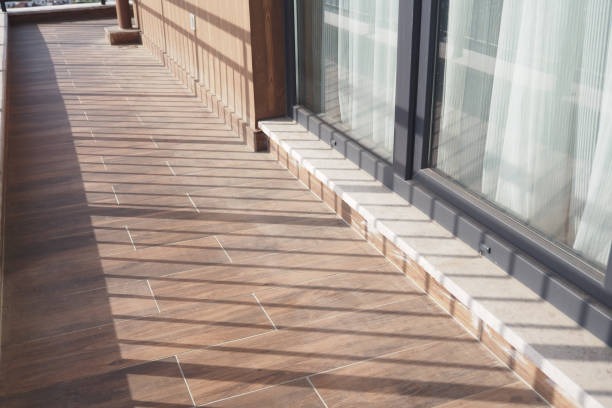When it comes to selecting the appropriate tile for your commercial or residential space it is essential to take into consideration several aspects that affect aesthetics as well as functionality. From the cost and durability aspect to absorption rates for water and slip resistance, these aspects can assist you in aligning your tiling choices to specific needs and requirements.
Cost
Although they share the identical name, porcelain and ceramic tiles are not the same. They both fall within the category of hard clay-based ceramic tiles, however they differ in their water resistance and durability. The right tile will help you to balance your budget and aesthetics for the area.
Ceramic and porcelain provide a variety of designs to match any style preference. Ceramic tiles can create modern and stylish spaces, and also mimic the warm and textured look of natural materials like wood and stone.
Porcelain tile is more dense, harder and more durable than ceramic. It can withstand gach bong 20×20 heavier foot traffic as well as high humidity levels as well as freezing temperatures.
This density and hardness comes at a price, however, because it’s more expensive to produce and to install. Ceramic however is more soft and porous. It is easier to cut than porcelain. This can make it an ideal option for DIYers. However, it is more brittle, which means it may require professional installation in some cases. It also has a lower water absorption rate, making it more suitable for areas where there is humidity.
Durability
The costs of maintaining each type of tile will vary depending on the intended use. In general, porcelain tiles require less maintenance than ceramic tiles because they are thicker and have better water and heat resistance. Ceramic tiles are also more robust. This means that they last longer and will withstand the rigors of foot traffic.
Glazed porcelain tiles come with protection from staining and bacteria. This makes it a great option for kitchen backsplashes as well as other areas that have a lot of moisture exposure. It is also chip and scratch resistant, making it a good choice for many different styles of design.
Inkjet technology lets you print any image or design onto porcelain. It is now possible to replicate the look of reclaimed woods, rare stones, and other unique aesthetics. This approach has the advantage that it reduces the environmental impact and prevents the reduction of natural materials. It is therefore suitable for commercial and residential projects that put a high value on durability. It is crucial to ensure that the resulting tile meets the standards of the industry.
Maintenance
The style of tile you choose will affect on a variety of variables, including the initial cost along with installation requirements, as well as ongoing maintenance needs. Ceramic tiles are ideal for areas that are susceptible to water, while ceramic tiles provide a gorgeous alternative at a less expensive cost.
Both options are gorgeous and will add value to your client’s house. However, if your client’s design goals include a long life span of their flooring, porcelain may be the best choice. It is more dense, less chip-prone and resistant to stains and water than ceramic.
Porosity affects the performance of ceramic tiles as they age. Ceramic tile absorbs water readily, between 3and 7 percent of its weight in one square inch. This means it is a less appealing choice for wet environments, where mold and mildew could flourish, or damage from freezing-thawing could be caused. The surface is more susceptible to staining, especially from acidic foods and requires frequent cleaning. The greater density of the material and the firing process also make ceramic tiles more expensive, not only to purchase but also to set up, as they require special tools. It can be expensive to remodel a home.
Style
It isn’t easy to pick the ideal tile for your home. Undecidedly, it can result in expensive replacements, headaches with maintenance and design disappointments that will last for years.
It’s important to understand the distinctions between porcelain and ceramic in order to ensure that you select the right tile for your space. If you’re looking for toughness, design flexibility, and moisture resistance porcelain could be the ideal choice for your next venture.
The porcelain tiles that are glazed or non-glazed, are crafted up of clays that have been refined with pigments. They’re then cured by firing. They are heated to greater temperatures and over a a longer period of time as compared to ceramic tiles. Ceramic tiles get more dense, harder and less porous in the process. This makes them suitable for use in heavy traffic areas and commercial projects. Ceramic tiles are, however are more susceptible to wear-and-tear and can scratch more easily than counterparts made of porcelain. They also aren’t as resistant to water, which is why they shouldn’t be used in spaces where there is a lot of humidity or moisture.
The best tile for bathrooms or Kitchens
When it comes to remodeling kitchens or bathrooms, your choice of tile will have a major influence on the overall style and efficiency of your home. Although both porcelain and ceramic tiles are affordable options for walls and floors, each type offers unique advantages that are best suited to your project’s specific needs.
Ceramic and porcelain tiles come in a wide range of colors, sizes and designs to suit your vision. You can choose from classic square or rectangular designs, striking geometric designs, or even large-format tiles that offer a sleek, modern look with fewer grout lines.
Porcelain tiles hold less water than ceramic tiles. This makes them a better option for wet areas such as bathrooms or patios. The high-end finishes can resemble natural stones or wood for an elegant look, and they’re more resistant to staining than ceramic tiles. Porcelain tiles are more expensive and need professional installation due to the fact thatthey’remore dense. In areas with high traffic, the glazed finish can fade over time, revealing the tile’s underlying color.





